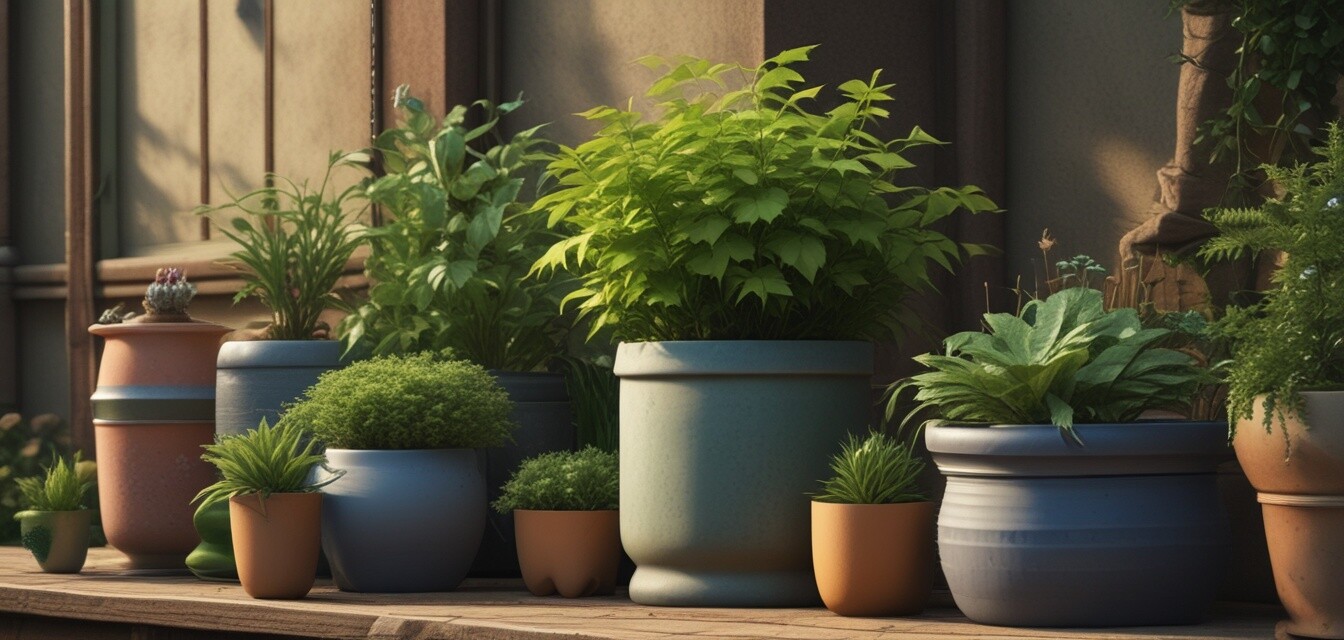
Selecting the Best Container for Your Plants
Key Takeaways
- Choose containers based on plant size and root depth.
- Materials affect durability, aesthetics, and moisture retention.
- Consider drainage holes to prevent overwatering.
- Match the container style to your garden theme for aesthetic appeal.
- Regularly check for signs of root crowding in potted plants.
Choosing the right container for your plants is essential for their growth and success. Whether you are a novice gardener or a seasoned plant enthusiast, selecting a container that suits your plant's needs can make all the difference in their development. This guide will provide insight into various materials and sizes of plant containers, equipping you with the knowledge to make the best decisions for your green companions.
Understanding plant needs
Before diving into the different types of containers available, it’s vital to understand what your plants need. This includes considerations around size, material, and drainage.
1. Plant size and root depth
Different plants require different amounts of space. Here are some general guidelines:
| Plant Type | Recommended Container Size |
|---|---|
| Seedlings | 2-4 inches |
| Herbs | 6-12 inches |
| Small Shrubs | 12-18 inches |
| Larger Plants (like tomatoes) | 5 gallons or more |
2. Container materials
The type of material plays a significant role in both aesthetics and how well a container performs. Below are some common materials:
| Material | Durability | Moisture Retention | Aesthetics |
|---|---|---|---|
| Plastic | High | Low | Moderate |
| Clay | Moderate | High | High |
| Ceramic | High | Moderate | Very High |
| Metal | High | Low | Moderate |
3. Drainage considerations
Drainage is crucial to prevent water from pooling and causing root rot. Always look for containers with:
- Drainage holes: Essential for water flow.
- Mesh barriers: Help prevent soil loss while allowing excess water to escape.
Aesthetic considerations
Selecting a container can also be about style. Match the container to your garden decor:
- For a modern patio, consider sleek ceramic or fiberglass pots.
- For a rustic garden, opt for natural clay or wooden planters.
- Brightly colored containers can add a pop of color among greenery.
Conclusion
In summary, selecting the best container for your plants involves understanding their needs and the characteristics of various materials. From drainage and size to aesthetics, every decision impacts the health and beauty of your plants. Consider checking out our luxury planters for options that combine quality and style.
Tips for Beginners
- Start with a single type of plant per container for simplicity.
- Experiment with different sizes to see what works best for your plants.
- Always check for drainage before planting.
- Use potting soil designed for container gardening for best results.
Pros
- Proper containers enhance plant health and growth.
- Diverse options available to match personal aesthetic.
- Good drainage prevents root diseases.
Cons
- Some materials may not be durable enough for outdoor use.
- Costs can increase for higher-quality containers.
- Heavy materials can make moving containers difficult.
For more guides on enhancing your garden, explore our Buying Guides.